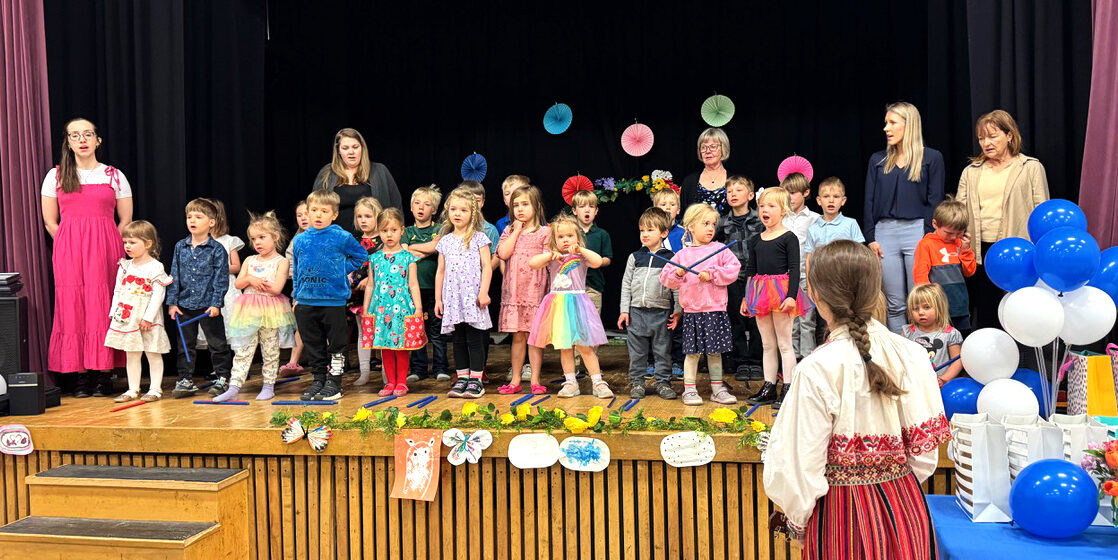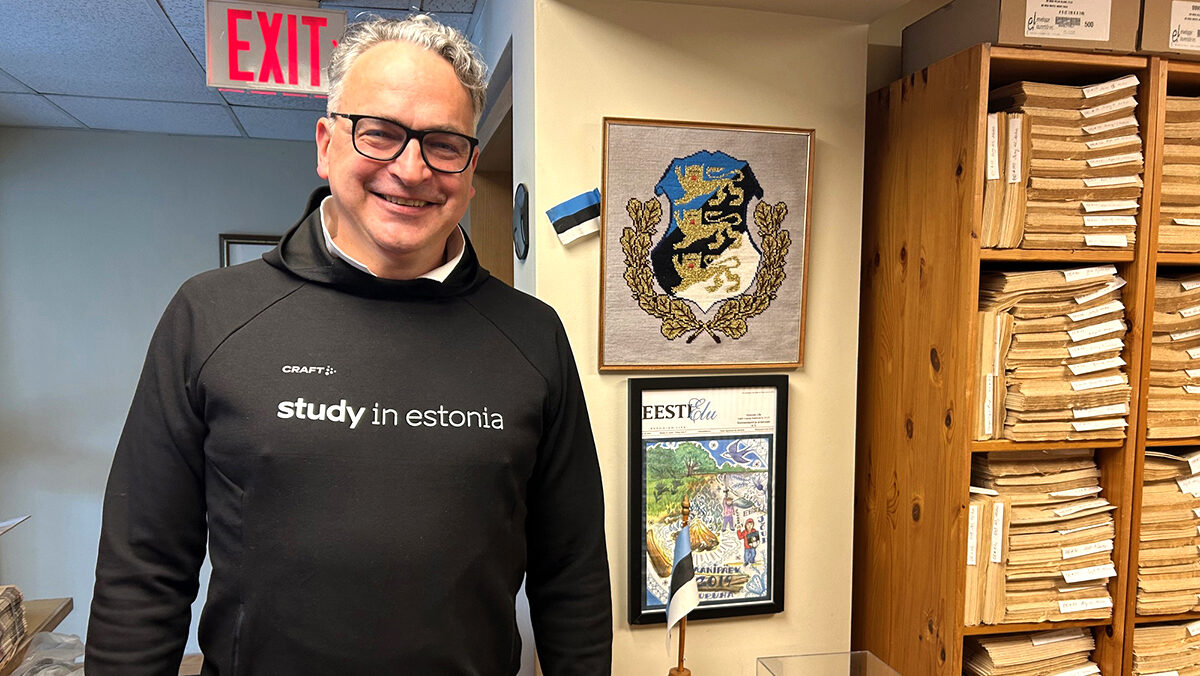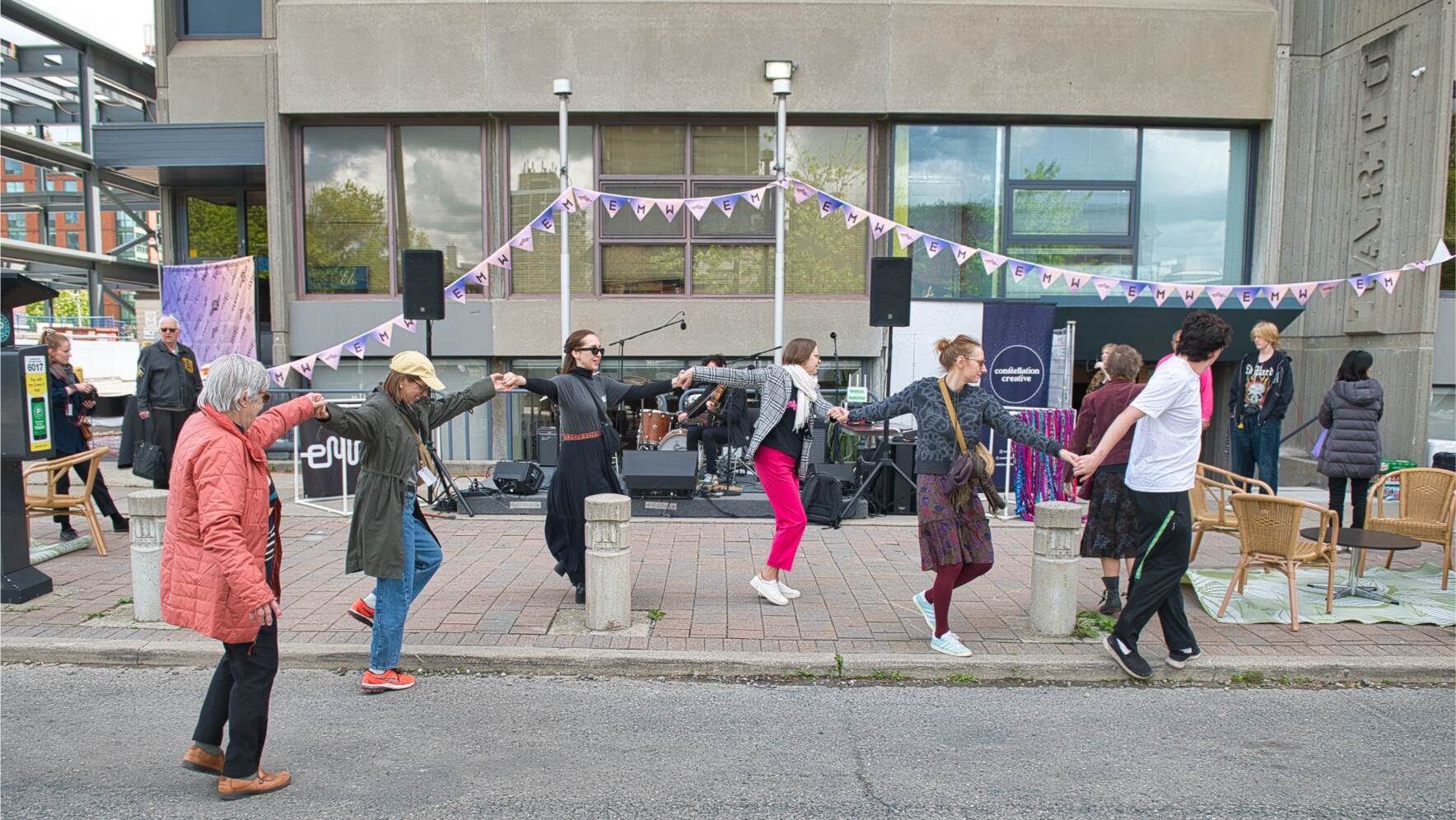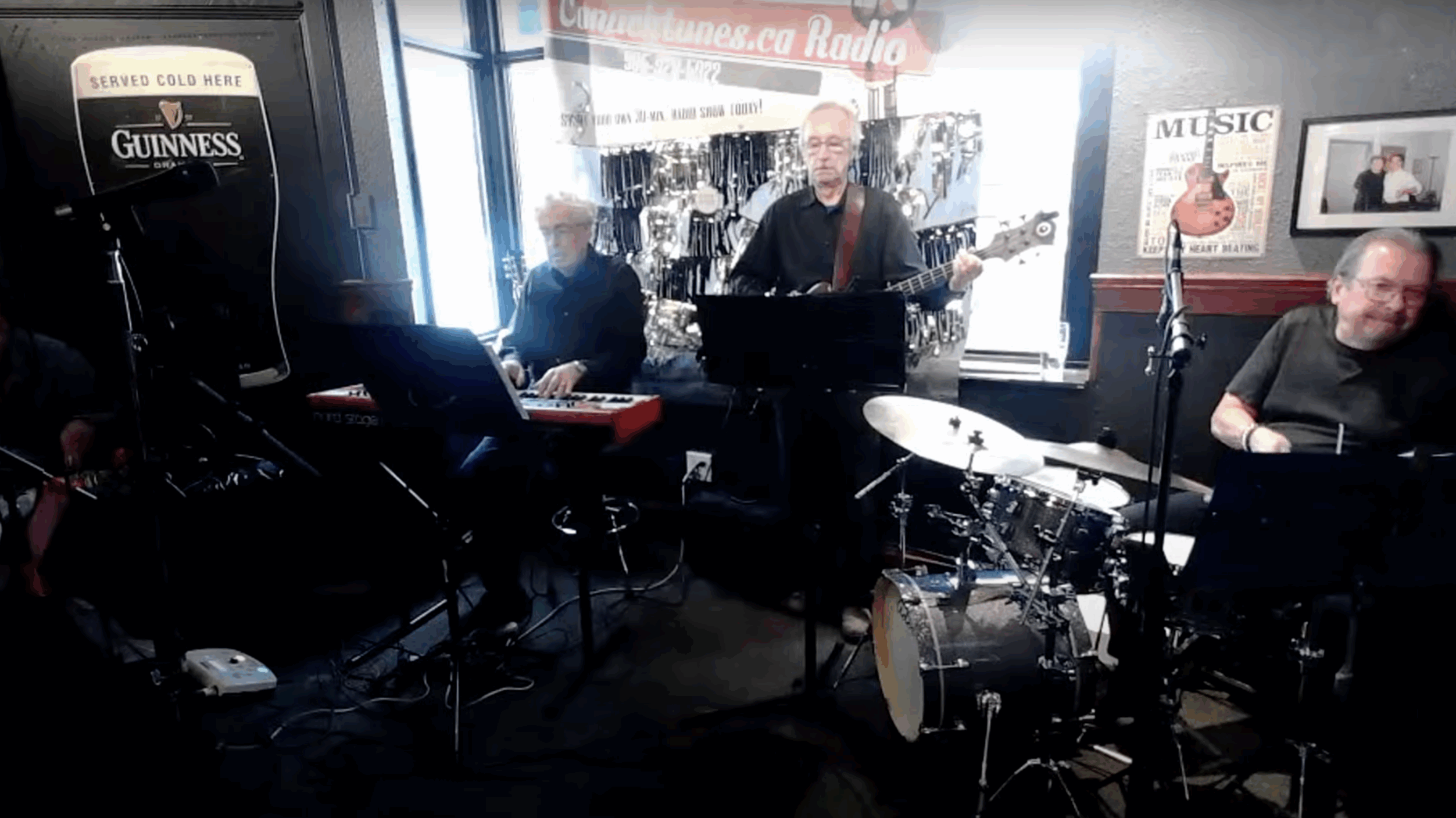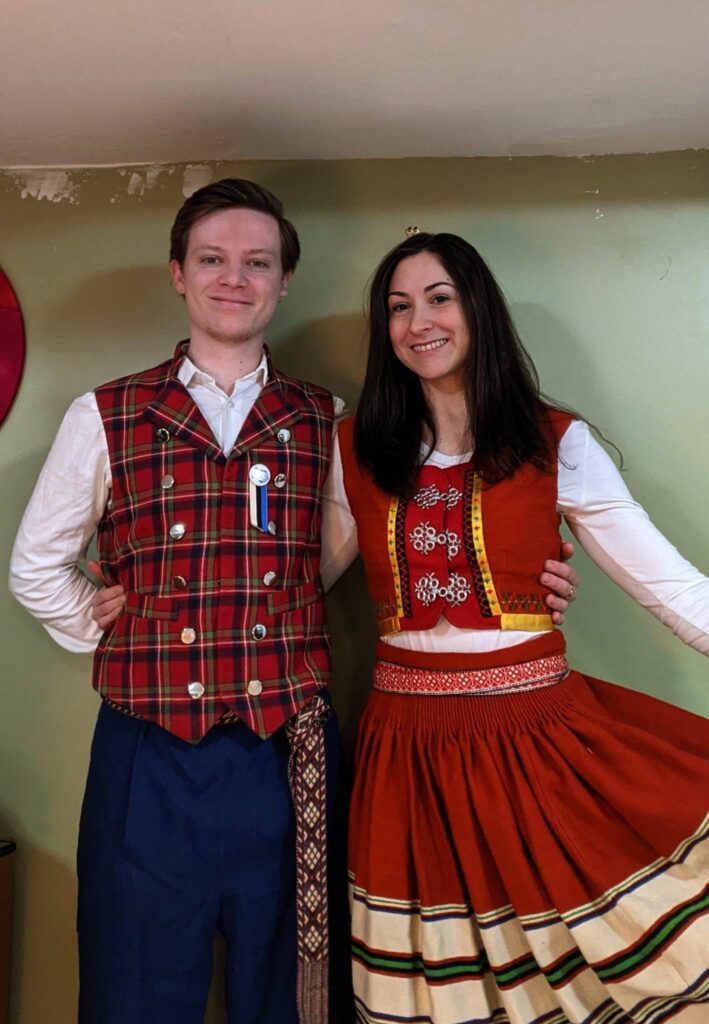
So when Matt Gibbs set foot in the event space of Tartu College to join TERR Kungla for a Thursday night practice in September 2022, he was jumping right into the “deep end” of Estonian culture, accompanied by his Estonian fiancée, Tuula Heinar.
Being the only person currently not of Estonian background to be in the group, I recently spoke with Matt about his insights on going outside of your comfort zone:
Was joining TERR Kungla your idea, something Tuula suggested, or a combination of both?
Tuula was the main driving force after attending the “Nou Pois Äläud” naiste tantsulaager with her mom during the summer of 2022. After doing the weekend intensive workshop, she caught the bug for picking rahvatants back up again for the first time since being a teenager at Estonian school and at Jõekääru.
What was that first Thursday night practice like?
I'm normally a pretty confident guy when it comes to approaching new social situations, but leading up to the first class, I definitely felt pretty apprehensive. Tuula had told me there was a pretty good chance I would be the only non-Estonian in the class, which up until this point has turned out to be true.
Luckily for me, the first class I attended was the first time anyone in the Kungla group had been able to get together to practice since the beginning of COVID, when things shut down. I think that made it a lot easier for me because everyone else was rusty after not practicing for a couple of years. For the first handful of classes, Taimi Hooper, Talvi Parming, and Elin Marley approached teaching the classes with the assumption that most folks wouldn't remember anything. This was perfect for me as I was just starting out.
The folks who were rusty may not have remembered all of the steps to the dances, but they knew the basic steps well and none of the footwork was foreign to them. The difference for me was that I had never done a waltz or polka step, had never done synchronized group dancing, and had no experience with taking choreography instructions or trying to remember a series of steps in my head. That made it a lot more challenging for me to keep up.
You've shown interest in electronic music and dancing more generally. Was this the foundation that you worked with in learning the Estonian folk dances?
I love dancing, and typically go out dancing at electronic music clubs in Toronto like Nomad, Coda, and The Wiggle Room once a week. That was definitely a huge contributing factor for my openness to take on the challenge of trying to learn rahvatants.
That being said, I don't think it would be accurate to say that the skills I have dancing to electronic music (which is typically all free-form, based on improvisation and intuition) have been of any help with rahvatants. In these dances, each step has to be followed in an exact sequence and on the exact beat of the music that the steps of the dance coincide with, otherwise you are going to throw off your partner, and quite possibly the whole group.
I think because of the early age that most Estos learn the basic, foundational steps of most of the traditional dances, they often take for granted how hard the steps are for someone who doesn't have the established muscle memory for it. So it has definitely been a considerable learning curve trying to hone the footwork and work on the mind-body connection of hearing, understanding, memorizing choreography instruction, and then getting your body to follow suit when the time is right.
Which dances have you been practicing?
Virve Voortants, Ingliska, Pärglipolka, Plaksulöömise Polka, Tuljak, and a new dance choreographed by Talvi Parming to the song „Kuival maal“ by Peeter Kopvillem.
What's been the most difficult dance to learn?
I still struggle with the waltz and polka step at times. I have to give a shout out to all the paarid I've had throughout the last couple of months who have been super patient with me stepping on their feet, causing us to create traffic jams and crash into other dancing partners. At this point, it definitely helps a lot when I'm dancing with a more experienced partner because I can feel the direction they are moving in and that's usually enough for me to stay on track without issues.
You've picked up some of the language while you're at it, being immersed in Estonian instructions. Which words or phrases stick out?
I want to test my memory of the words without any help from Tuula, so here goes: põimimine (a move where you are passing through people exchanging hands); proovime (“let's try”); vasak (left); parem (right); mets (forest); kirik (church); liblikasamm (“butterfly step”); tüdruk (girl); poiss (boy); käsi (hand); käevang (spinning arm in arm); polkasamm (polka step); paar (a couple); üks, kaks, kolm, neli (1, 2, 3, 4); and rahvariided (folk costume).
What does it mean to you to be learning about Estonian culture like this?
First and foremost, it's about my love for my fiancée Tuula, and wanting to support her desire to strengthen her ties to the community. Tuula and I have also chosen to host our upcoming September 2023 wedding at Jõekääru, which is something Tuula has wanted since she was a little girl attending camp there.
Secondly, I wasn't raised taking part in any particular cultural community or practicing any distinct cultural practices. After witnessing and taking part in a variety of different Estonian community events (such as Estonian music week, visiting Jõekääru for the final performance of the naiste tantsulaager, the “Lääst Blääst” at Eesti Maja, the recent Jõekääru Suvekodu Selts fundraiser at Tartu College, tours of the VEMU archives at TC, and Sakala Jõulupuu to name a few) I realize how much value the community provides its members in terms of being a strong social fabric. That's something that I've been increasingly grateful to be a part of, and also something that I look forward to our future kids being able to participate in someday.
Lastly, since getting introduced to sauna culture by my Estonian in-laws, I have evolved from being a hesitant skeptic of both the benefits and enjoyment of being in a very hot, sweaty confined space, to being entirely converted into a sauna enthusiast. Tuula and I have recently bought a wood burning sauna cabin and use it multiple times a week. Now I get to share that experience with our friends in Toronto, who inevitably become converts, too.
This interview has been edited and condensed.
(Interview by Vincent Teetsov)
